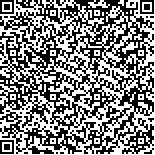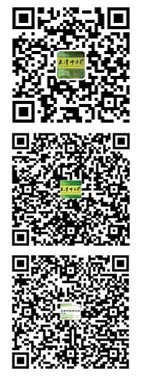| 本文已被:浏览 0次 下载 0次 |

码上扫一扫! |
|
|
| 中成药治疗高脂血症随机对照试验的证据总结与评价 |
|
马毓聪1, 胡海殷2, 彭德慧1, 王丹蕾1, 史梦龙1, 刘晓轩1, 王辉1,2, 张俊华1,2, 季昭臣1,2
|
|
1.天津中医药大学, 天津 301617;2.现代中医药海河实验室, 天津 301617
|
|
| 摘要: |
| [目的] 本研究全面收集、分析中成药治疗高脂血症的临床证据,旨在为临床合理用药、优化治疗方案及后续研究的开展提供参考。[方法] 通过检索中国知网(CNKI)、万方数据库(Wanfang Database)、维普(VIP)、中国生物医学文献服务系统(SinoMed)、PubMed、EMbase、the Cochrane Library、Web of Science数据库纳入相关文献,并录入到中医药循证研究证据库系统(EVDS)旗下智能化中成药临床证据数据库中(AICED-CPM),获取中成药治疗高脂血症随机对照试验(RCT)。研究员根据纳排标准独立筛选文献、提取信息得到符合要求的RCT,并采用RoB 2.0工具进行偏倚风险评估。[结果] 纳入637 篇研究共涉及196 种药物(口服中成药175 种,中药注射剂21 种),有65 项RCT纳入患者样本量为200 例及以上。干预/对照设计50 种,应用数量最多的干预/对照设计为中成药vs.西药(165 篇,25.90%)。报告结局指标共计197 种,包括计数指标26 种(903 次),计量指标171种(3 000 次)。经质量评价显示,中成药治疗高脂血症RCT文献评估整体质量欠佳,在分配隐藏、受试者盲法、其他偏倚3 个方面的报告存在明显不足。[结论] 纳入RCT涉及的中成药品种较多,以口服药为主,结局指标以计量指标为主,表明中药在高脂血症治疗方面进行了较为广泛的探索。建议今后相关研究的开展参考相关新版指南设定结局评价指标;提升RCT设计、实施与报告的严谨性;明确中医辨证分型,细化临床治疗方案,以期为临床证据转化提供高质量的证据支持。 |
| 关键词: 中成药 高脂血症 随机对照试验 循证医学 中医 |
| DOI:10.11656/j.issn.1672-1519.2025.04.08 |
| 分类号:R589.2 |
| 基金项目:中医药创新团队及人才支持计划项目-中医药疗效证据智能生产与转化创新团队(ZYYCXTD-D-202204);现代中医药海河实验室科技项目:中医药临床证据生产信息平台(22HHZYSS00013);天津市杰出青年科学基金项目(20JCJQJC00120)。 |
|
| Evidence summary and evaluation of randomized controlled trials on the treatment of hyperlipidemia with Chinese patent medicines |
|
MA Yucong1, HU Haiyin2, PENG Dehui1, WANG Danlei1, SHI Menglong1, LIU Xiaoxuan1, WANG Hui1,2, ZHANG Junhua1,2, JI Zhaochen1,2
|
|
1.Tianjin University of Traditional Chinese Medicine, Tianjin 301617, China;2.Haihe Laboratory of Modern Chinese Medicine, Tianjin 301617, China
|
| Abstract: |
| [Objective] This study comprehensively collects and analyzes the clinical evidence on the treatment of hyperlipidemia with proprietary Chinese medicines,aiming to provide references for the rational use of medicines in the clinic,the optimization of therapeutic regimens,and the development of follow-up studies. [Methods] The RCT of DFU treated with Chinese patent medicine was obtained and analyzed using the AI-clinical evidence database of Chinese patent medicine(AICED-CPM). The analysis was supplemented with data from CNKI,Wanfang Database,VIP,SinoMed,PubMed,EMbase,Cochrane Library,and Web of Science. Researchers independently screened the literature and extracted information according to inclusion and exclusion criteria,and assessed the risk of bias using the RoB 2.0. [Resules] A total of 637 studies involving 196 types of drugs(175 oral Chinese patent medicines and 21 traditional Chinese medicine injections) were included,with 65 RCTs having a patient sample size of 200 or more. The most commonly used intervention/control design was Chinese patent medicine vs. Western medicine(165 articles,25.90%). A total of 197 outcomes were reported,including 26 counting outcomes(903 times) and 171 measuring outcomes(3 000 times). The quality evaluation showed that the overall quality of RCTs on the treatment of hyperlipidemia with Chinese patent medicines was suboptimal,with significant deficiencies in the reporting of allocation concealment,blinding of participants,and other biases. [Conclusions] A large number of Chinese patent medicines were involved in the included RCTs. Mainly oral drugs,and the outcomes were mainly quantitative outcomes,indicating that traditional Chinese medicine had been extensively explored in the treatment of hyperlipidemia. It is recommended that future studies should refer to the new version of the guideline to set the outcome evaluation indexes;improve the rigor of RCT design,implementation,and reporting;clarify the identification and typing of Chinese medicine,and refine the clinical treatment protocols,to facilitate the translation of the clinical evidence to practice and provide evidence support for the conduct of subsequent studies. |
| Key words: Chinese patent medicine hyperlipidemia randomized controlled trial evidence-based medicine traditional Chinese medicine |
